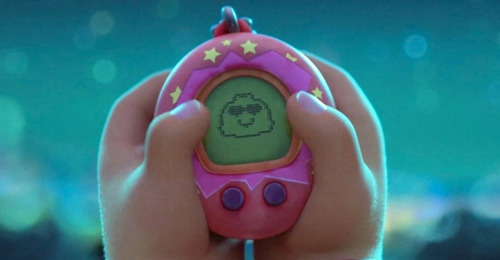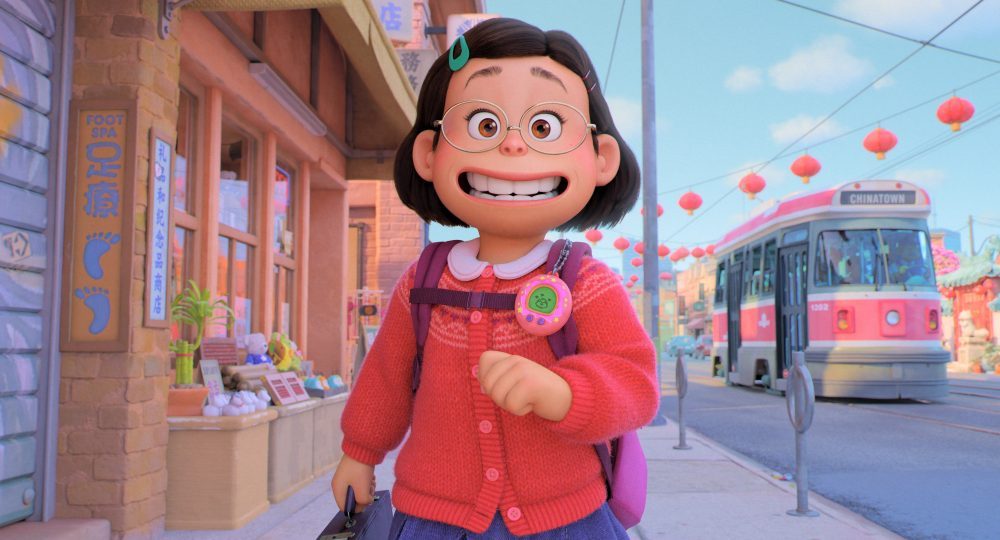Pixar’s 2022 film Turning Red combines several of my favorite things: 2000s nostalgia, giant red pandas, female friendships, and generational trauma within Asian families. Okay, the generational trauma isn’t my favorite thing per se, but Turning Red and other Asian-led films like Everything Everywhere All at Once have given us some of the most striking and relatable mother-daughter relationships in cinema.
Not to say that Turning Red is a complete sob fest — even though I might have shed a few tears, it’s still a fun and energetic family film. But Turning Red stealthily sums up Mei Lin’s relationship with her mother through a surprising and colorful motif: Mei’s relationship with her Tamagotchi.

Tamagotchi are a fun throwback to the early 2000s, a virtual pet contained within a candy-colored plastic case that you carry around like a keychain. When I was a kid I adored my Tamagotchi and carried it with me everywhere, listening for the little beeps that let me know that it needed my attention. I, like many other kids at that age, was a proud virtual pet parent.
But the heart of Turning Red lies in the real parent-child relationship between Mei and her mother, Ming, who is a classic overprotective Asian mom. When Mei’s inner panda comes out, Ming goes to great lengths to protect Mei and suppress the panda, the same way that the women of their family have always done. It’s clear that she loves Mei very much, but her doting helicopter parenting and the repression of her own inner panda end up creating the rift between them.
As Mei plays with her Tamagotchi, she’s able to navigate the caretaker role that Ming usually plays. Mei even playfully characterizes her virtual pet as her own by naming it Robaire Jr after her favorite member of the boyband 4*Town, and she jokes with her friends about the Tamagotchi meeting its father at the 4*Town concert. The Tamagotchi gives Mei a safe way to experiment with caretaking, similar to how the film’s director, Domee Shi, described boy bands as giving teenage girls a safe space to explore attraction and boys.
But a virtual pet has its caveats. For one, it is an object; the pet is programmed to be molded depending on how the player treats it. A Tamagotchi is literally meant to be attached to your hip and its beeping signals when it needs your immediate attention. Doting on a virtual pet will ensure that it grows up healthy. But when we take this idea and apply it to how Ming parents Mei, it’s clear that Mei struggles to be her own person and finds it difficult to break free from her mom’s control. It’s more than a power struggle between two people — Mei has a hard time parsing her own feelings for her mom internally since she knows her actions come from a place of love. Her own attachment to the Tamagotchi may reinforce how she still believes in these ideas about caretaking. The ways that people are taught to care for each other start at a young age, and breaking free from those ideas can be difficult.
It is interesting how caretaking is marketed to children, especially to young girls, as a mechanic of play. The essay, “But does pikachu love you?: reproductive labor in casual and hardcore games,” talks about the caretaking in Let’s Go Pikachu and referred to it as “reproductive labor” which is seen as a “feminized play mechanic” by so-called hardcore gamers.

Turning Red explores the idea of reproductive labor as a feminine activity through the trauma that comes from the panda lineage only affecting the women of the family. The film also focuses on how Ming’s relationship with her own mother informed how she treated Mei. The scene in the bamboo forest with young Ming was impactful in that it painted how trauma affected three generations of women. Young Ming tearfully describes how she lost control of her panda when her mother didn’t approve of Mei’s father and accidentally hurt her in a way that mirrors her own motherly relationship to Mei. As she follows Mei out of the forest, she returns to her adult self and reunites with her own mother. This is when Mei chooses to keep her panda, the thing that every woman in her family tried to subdue and protect her from. But it’s her choice to embrace it, and that is finally accepted by both Ming and her grandmother, ending the cycle of repression that followed them for generations.
At the end of the film we see that Ming housed her panda inside Mei’s Tamagotchi. Ming putting her own panda in the Tamagotchi and even adoring it shows that she’s turned some of the attention that she put on Mei inwards and may even be starting to heal her inner child. Even if the relationship isn’t perfect, perhaps Mei and Ming found healthier ways of communication and caretaking that will lead them in the right direction.
Images in this article via Disney’s Turning Red (2022).




